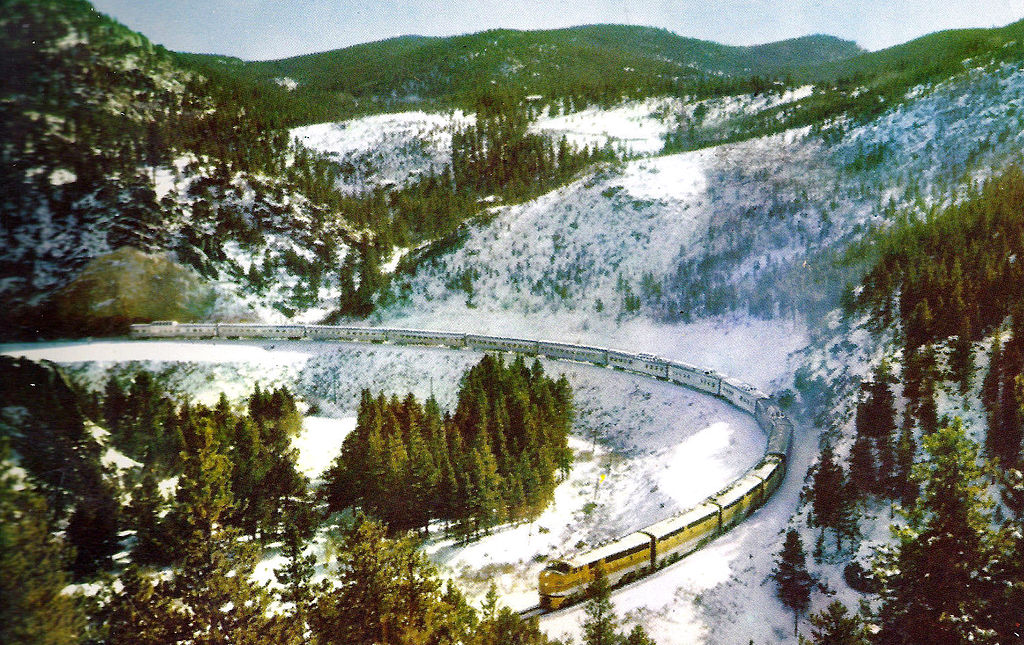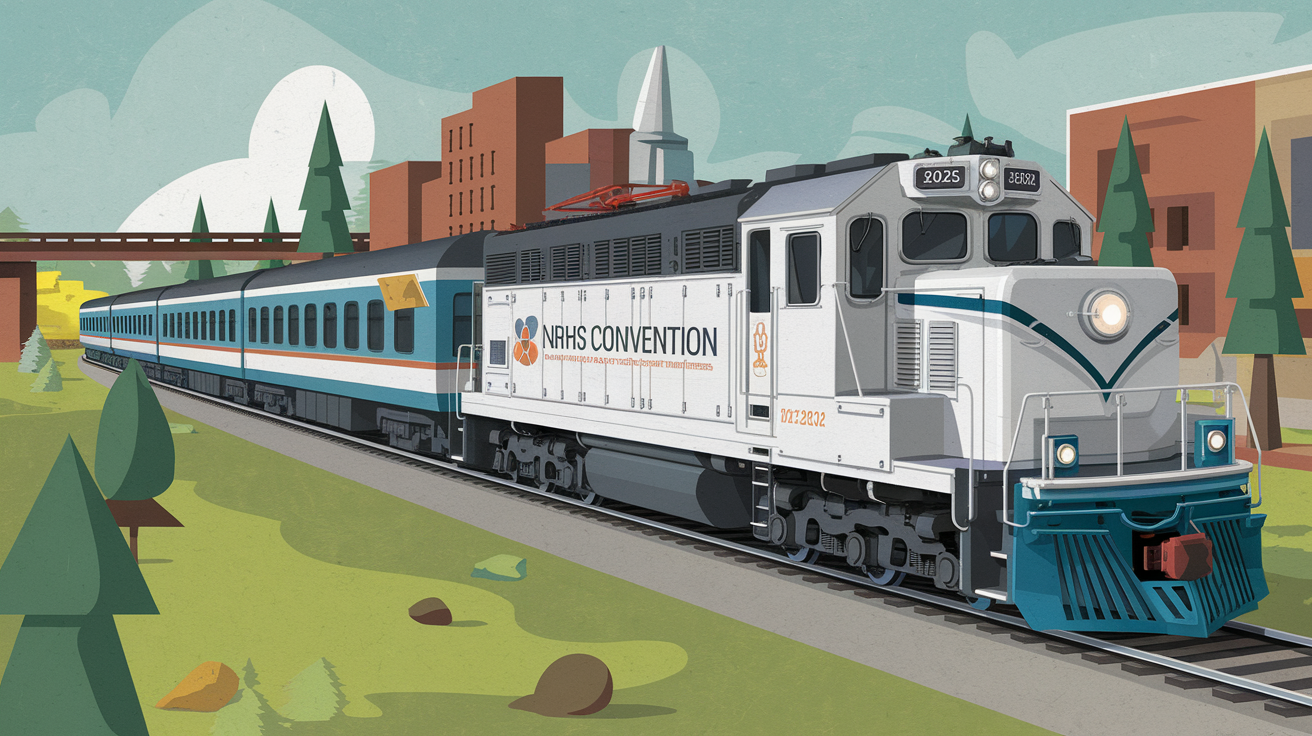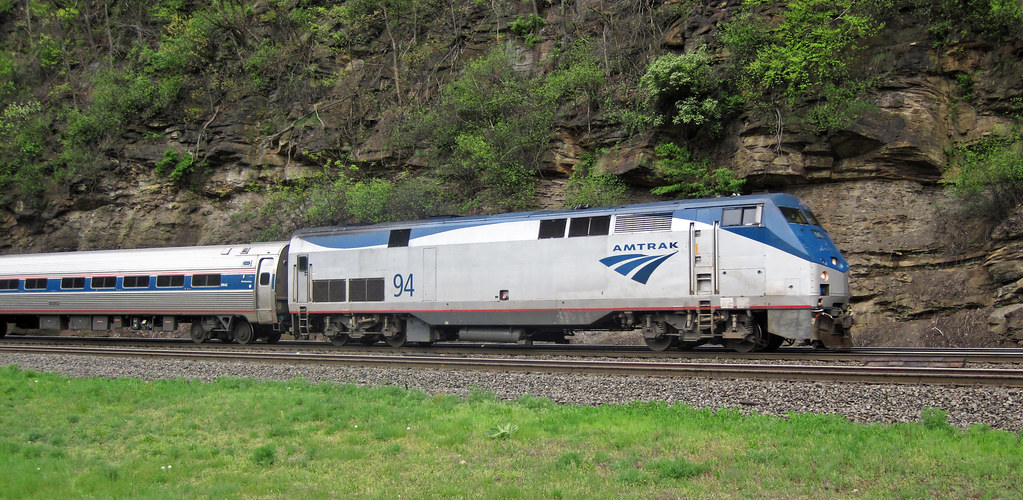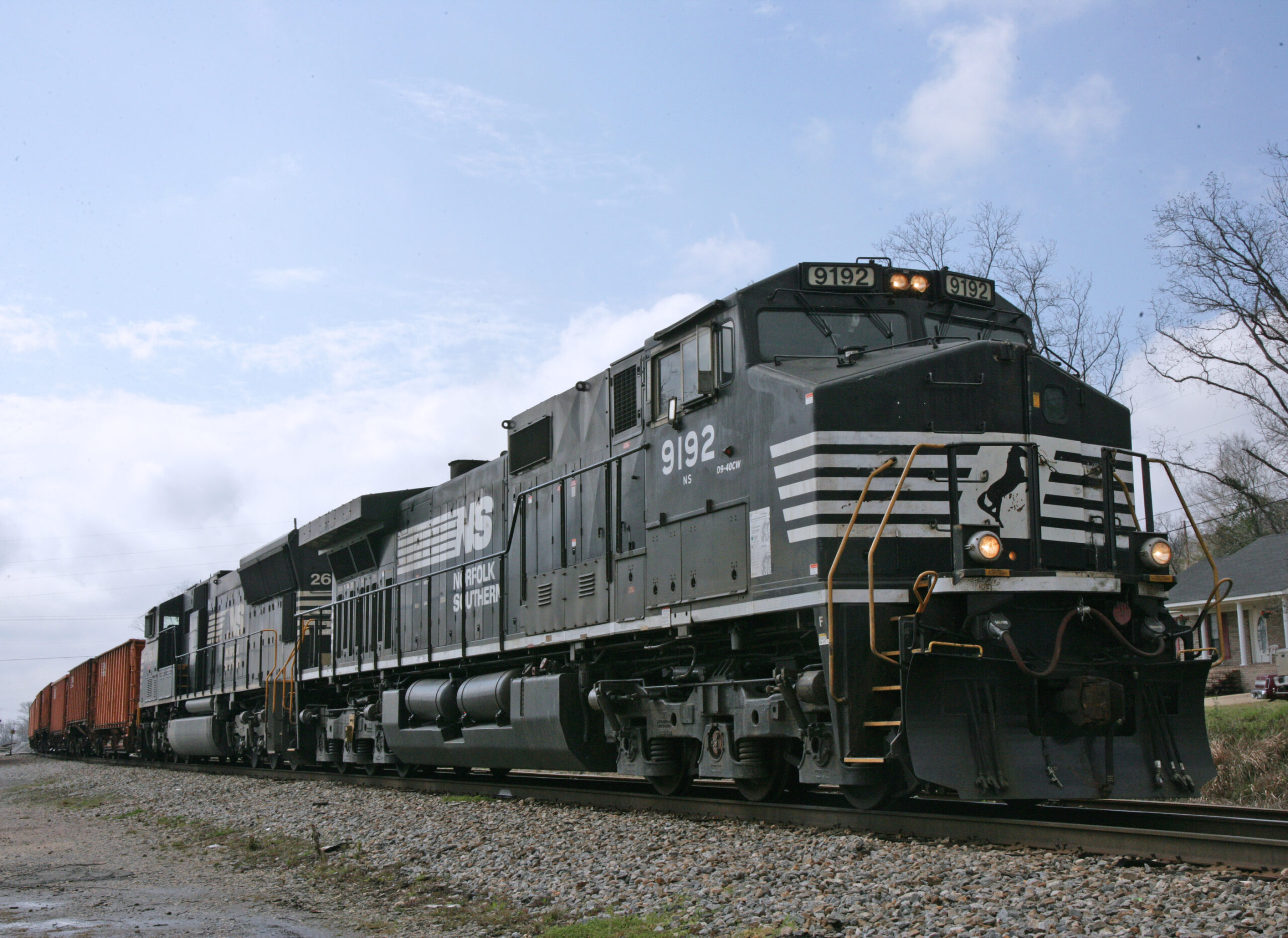Table of Contents
Quick Facts
| Year Founded | 1870 |
| Year of Demise | 1988 Merged with Southern Pacific |
| Total Track Mileage | 1,861 miles |
| Number of States was Located In | 3 |
| Headquarters | Denver, Colorado |
History
The Denver & Rio Grande Western Railroad holds a significant place in the history of American railroading. Founded in the late 19th century, the railroad played a vital role in the transportation of goods and people across the western United States. The company’s innovative use of narrow gauge tracks and strategic expansion of its network made it a major player in the region’s mining and agricultural industries. However, the 20th century brought significant challenges to the railroad industry, and the Denver & Rio Grande Western Railroad eventually merged with other companies. Despite this, the legacy of the railroad endures, with many historic sites and museums dedicated to its memory. In this article, we will explore the fascinating history of the Denver & Rio Grande Western Railroad and its impact on American transportation and industry.
The Founding of the Denver & Rio Grande Western Railroad
The Denver & Rio Grande Western Railroad was founded in 1870 by William Jackson Palmer, who was a Civil War general and a successful businessman. Palmer saw the need for a railroad that would connect the Rocky Mountains with the Midwest and the East Coast. He wanted to create a railroad that could transport goods and people more efficiently than the existing narrow-gauge railroads that were prevalent in the West.
Building the First Section of the Railroad
The first section of the Denver & Rio Grande Western Railroad was built between Denver and Colorado Springs in the early 1870s. This section was completed in record time by using innovative construction techniques such as the use of steel rails and ties instead of wooden ones. This section was significant as it allowed for faster transportation of goods and people between Denver and the mining towns of the Pikes Peak region.
Expansion and Growth of the Railroad Network
Acquisition of Other Railroad Companies
In the 1880s, the Denver & Rio Grande Western Railroad acquired several other railroad companies, including the Denver, South Park and Pacific Railroad and the Rio Grande Western Railroad. These acquisitions allowed for an expansion of the railroad network into new areas and the formation of new connections to major cities such as Salt Lake City, San Francisco, and Los Angeles.
Extension of the Railroad into Other States
In the early 1900s, the Denver & Rio Grande Western Railroad extended its network into other states such as Utah, New Mexico, and Texas. This expansion allowed for increased transportation of goods and people to these areas, which were largely untouched by the railroad industry at the time.
Development of the Narrow Gauge Railroad System
The Denver & Rio Grande Western Railroad was well-known for its narrow gauge railroad system, which was used in many of the mountainous regions that the railroad served. This system allowed for better maneuverability of the trains and was ideal for transporting goods such as ore and timber from the mountains back to the cities.
The Importance of the Railroad to Mining and Agriculture
Transportation of Mineral Resources
The Denver & Rio Grande Western Railroad played a significant role in the transportation of mineral resources from the mines to the cities. The railroad was instrumental in the growth of the mining industry in Colorado, which was one of the largest silver and gold mining regions in the world in the late 1800s and early 1900s.
Connection to Agricultural Regions
The Denver & Rio Grande Western Railroad was also vital in the transportation of agricultural products from the fields to the cities. The railroad served many agricultural regions in Colorado, Utah, and New Mexico, and allowed for the transportation of crops such as wheat, corn, and sugar beets to the cities for processing and distribution.
Government Control of the Railroad
During WWII
During World War II, the Denver & Rio Grande Western Railroad was taken over by the government and placed under the control of the War Production Board. The railroad was used extensively to transport troops, weapons, and supplies, and played a crucial role in the war effort.
Changes in the Railroad Industry after the War
After the war, the Denver & Rio Grande Western Railroad faced competition from other modes of transportation such as trucks and planes. The railroad industry also underwent significant changes, including the shift from narrow gauge to standard gauge and the increased use of diesel locomotives. Despite these challenges, the Denver & Rio Grande Western Railroad continued to operate and serve the communities it served until it was merged with the Southern Pacific Railroad in the 1980s.
Decline of the Denver & Rio Grande Western Railroad and its Merger with Other Companies
The Denver & Rio Grande Western Railroad was not immune to the challenges faced by the railroad industry in the 20th century. As automobiles and highways became increasingly popular, passenger train travel declined. The railroad industry also faced increased competition from trucks and airplanes for freight transportation.
These challenges led to financial struggles for the Denver & Rio Grande Western Railroad, and in the 1980s, it merged with the Southern Pacific Railroad. The merged company faced continued financial difficulties and was eventually acquired by the Union Pacific Railroad in 1996.
Merger with Other Railroad Companies
In an effort to combat financial struggles, the Denver & Rio Grande Western Railroad merged with the Southern Pacific Railroad in 1988. The merged company faced continued financial difficulties and was eventually acquired by the Union Pacific Railroad in 1996.
The merger of the Denver & Rio Grande Western Railroad with other companies is just one example of the changes and consolidation that occurred in the railroad industry in the 20th century.
Despite its decline and eventual merger with other companies, the Denver & Rio Grande Western Railroad left a lasting legacy and heritage in the American West.
Efforts to Preserve the Railroad’s Legacy
Organizations such as the Colorado Railroad Museum and the Rio Grande Scenic Railroad work to preserve the legacy of the Denver & Rio Grande Western Railroad. These efforts include maintaining and restoring historic locomotives and rolling stock, as well as providing educational programs and train rides for the public.
Examples of Restored Railroad Sites
Restored railroad sites such as the Cumbres & Toltec Scenic Railroad, which operates on a section of the Denver & Rio Grande Western Railroad’s former narrow gauge track, provide a unique opportunity to experience the history and heritage of the company. Other restored sites include the Durango & Silverton Narrow Gauge Railroad in Colorado.
Influence of the Railroad on Modern Transportation
The Denver & Rio Grande Western Railroad played a significant role in shaping transportation in the American West. The railroad made it possible for people and goods to travel quickly and efficiently across long distances, connecting communities and fueling economic growth.
The impact of the railroad can still be seen in modern transportation, as many highways and transportation corridors follow the path of former railroad lines.
FAQ
When was the Denver & Rio Grande Western Railroad founded?
The Denver & Rio Grande Western Railroad was founded in 1870 by General William J. Palmer.
What was the significance of the railroad’s narrow gauge tracks?
The use of narrow gauge tracks allowed the Denver & Rio Grande Western Railroad to operate more efficiently in the mountainous terrain of the western United States.
Is the Denver & Rio Grande Western Railroad still in operation today?
No, the Denver & Rio Grande Western Railroad merged with other companies in the mid-20th century, and its equipment and facilities have been preserved as historic sites.
What is the legacy of the Denver & Rio Grande Western Railroad?
The legacy of the Denver & Rio Grande Western Railroad includes its impact on the mining, agriculture, and transportation industries of the western United States, as well as the preservation of many historic sites and museums dedicated to its memory.
Riding the Line Today
There are several opportunities to ride the Denver & Rio Grande Western Railroad today. These include Amtrak, and three tourist Railroads
| Amtrak Train Name | California Zephyr |
| End Point Stations | Denver Colorado, Salt Lake City Utah |
| Closest Airport to | Denver International Airport |
| Closest Airport to | Salt Lake City International Airport |
| Time train leaves Denver | 8:05 AM Mountain Time |
| Time train leaves | 3:30 AM Mountain Time |
| Number of hours of travel | 15 hours |
| Cost of a Coach Seat | $87.00 |
| Other services and upgrades available | Roomette Bedroom Bedroom Suite Family Bedroom Traditional dining |

Cumbres & Toltec Scenic Railroad
his historic line stretches over 64 miles from Chama, New Mexico to Antonito, Colorado and takes passengers through some of the most stunning mountain vistas in the country. The trains themselves are authentic steam locomotives that were in use during the turn of the century and offer a unique glimpse into America’s past. While onboard, visitors will be treated to sweeping views of rugged terrain including deep canyons, lofty peaks, and meandering rivers. For history buffs, there are also opportunities to learn about the area’s rich culture and heritage through informative exhibits and interpretive guides. Whether you’re looking for a relaxing ride with friends or an education-packed journey with family, the Cumbres & Toltec Scenic Railroad has something for everyone to enjoy!
Durando & Silverton Railroad
The Durango & Silverton Railroad is a historic narrow-gauge railroad that takes passengers on a scenic journey through the mountains of southwestern Colorado. Originally built in 1881 as a means to transport gold and silver ore from the mines in the San Juan Mountains, today it offers tourists an opportunity to step back in time and experience an authentic steam-operated train ride. The train departs from downtown Durango and winds through breathtaking canyons, over high trestles, and past old mining towns before arriving in Silverton. Along the way, passengers are treated to spectacular views of untouched wilderness and towering peaks. This railway has been noted as one of the most picturesque railroads worldwide thanks to its stunning scenery, unique history, and authentic atmosphere that offer visitors an unforgettable experience.
Royal Gorge Route Railroad
This historic railroad offers a scenic journey through the ruggedly beautiful Royal Gorge, passing by steep cliffs, breathtaking views of the Arkansas River, and the iconic Royal Gorge Bridge. The train cars themselves are expertly refurbished vintage coaches with plush seats and wide windows for optimal viewing pleasure. Along the way, knowledgeable guides provide informative commentary about the region’s history, geology, and wildlife. The food onboard is top-notch too; passengers can enjoy a hearty meal or sip on local craft beer while taking in the awe-inspiring scenery from their seat. Whether you’re seeking an adventure with family or friends, or just want to enjoy some stunning Colorado landscapes in comfort, the Royal Gorge Route Railroad is an everlasting memory waiting to happen.
Surviving Locomotives
There are many surviving D&RGW steam locomotives. All of them are narrow gauge locomotives and located in various locations
| No. | Class | Type | Gauge | Location | Status | Builder Info |
| 169 | T-12 | 4-6-0 | 36″ | Cole Park, Alamosa, CO | display | Baldwin #7028, 1883 |
| 494 | K-37 | 2-8-2 | 36″ | C&TS yard, Antonito, CO | display | Baldwin (D&RGW Burnham Shops) #20748, 1928 |
| 495 | K-37 | 2-8-2 | 36″ | C&TS yard, Antonito, CO | display | Baldwin (D&RGW Burnham Shops) #20522, 1928 |
| 340 (400) | C-19 | 2-8-2 | 36″ | Knott’s Berry Farm, Buena Park, CA | operational | Burnham, Parry, Williams #5571, 1881 |
| 499 | K-37 | 2-8-2 | 36″ | Royal Gorge Park, Canon City, CO | display | D&RGW (Burnham) #20753, 1930 |
| 315 (425) | C-18 | 2-8-0 | 36″ | Cumbres & Toltec, Chama, NM | operational | Baldwin #14352, 1895 |
| 463 | K-27 | 2-8-2 | 36″ | Cumbres & Toltec, Chama, NM | operational | Baldwin #21788, 1903 |
| 483 | K-36 | 2-8-2 | 36″ | Cumbres & Toltec, Chama, NM | restoration | Baldwin #58584, 1925 |
| 484 | K-36 | 2-8-2 | 36″ | Cumbres & Toltec, Chama, NM | operational | Baldwin #58585, 1925 |
| 487 | K-36 | 2-8-2 | 36″ | Cumbres & Toltec, Chama, NM | out of service | Baldwin #58588, 1925 |
| 488 | K-36 | 2-8-2 | 36″ | Cumbres & Toltec, Chama, NM | operational | Baldwin #58589, 1925 |
| 489 | K-36 | 2-8-2 | 36″ | Cumbres & Toltec, Chama, NM | operational | Baldwin #58590, 1925 |
| 492 | K-37 | 2-8-2 | 36″ | Cumbres & Toltec, Chama, NM | stored | Baldwin (D&RGW Burnham Shops) #20749, 1928 |
| 497 | K-37 | 2-8-2 | 36″ | Cumbres & Toltec, Chama, NM | out of service | Baldwin (D&RGW Burnham Shops) #20521, 1930 |
| 462 | K-27 | 2-8-2 | 36″ | Cumbres & Toltec, Chama, NM | stored | Baldwin #21781, 1903 |
| 278 | C-16 | 2-8-0 | 36″ | Morrow Point Dam Road, Cimarron, CO | display | Baldwin #6030, 1882 |
| 42 (420) | C-17 | 2-8-0 | 36″ | Durango & Silverton, Durango, CO | display | Baldwin #8626, 1887 |
| 493 | K-37 | 2-8-2 | 36″ | Durango & Silverton, Durango, CO | operational | Baldwin (D&RGW Burnham Shops) #20550, 1928 |
| 473 | K-28 | 2-8-2 | 36″ | Durango & Silverton, Durango, CO | operational | Alco (Schenectady) #64984, 1923 |
| 476 | K-28 | 2-8-2 | 36″ | Durango & Silverton, Durango, CO | operational | Alco (Schenectady) #64987, 1923 |
| 478 | K-28 | 2-8-2 | 36″ | Durango & Silverton, Durango, CO | out of service | Alco (Schenectady) #64989, 1923 |
| 480 | K-36 | 2-8-2 | 36″ | Durango & Silverton, Durango, CO | operational | Baldwin #58558, 1925 |
| 481 | K-36 | 2-8-2 | 36″ | Durango & Silverton, Durango, CO | operational | Baldwin #58559, 1925 |
| 482 | K-36 | 2-8-2 | 36″ | Durango & Silverton, Durango, CO | operational | Baldwin #58541, 1925 |
| 486 | K-36 | 2-8-2 | 36″ | Durango & Silverton, Durango, CO | out of service | Baldwin #58587, 1925 |
| 498 | K-37 | 2-8-2 | 36″ | Durango & Silverton, Durango, CO | stored | Baldwin (D&RGW Burnham Shops) #20640, 1930 |
| 464 | K-27 | 2-8-2 | 36″ | Huckleberry Railroad, Flint, MI | out of service | Baldwin #21796, 1903 |
| 318 (8) | C-18 | 2-8-2 | 36″ | Colorado Railroad Museum, Golden, CO | display | Baldwin (Burnham) #14769, 03/1896 |
| 346 (406) | C-19 | 2-8-2 | 36″ | Colorado Railroad Museum, Golden, CO | out of service | Baldwin (Burnham) #5712, 1881 |
| 491 | K-37 | 2-8-2 | 36″ | Colorado Railroad Museum, Golden, CO | operational | D&RGW (Burnham) #20829, 1928 |
| 268 | C-16 | 2-8-0 | 36″ | Pioneer Museum, Gunnison, CO | display | Baldwin (Burnham) #6002, 1882 |
| 223 | C-16 | 2-8-0 | 36″ | Utah State Railroad Museum, Ogden, UT | restoration | Grant Locomotive Works #1436, 12/1881 |
























